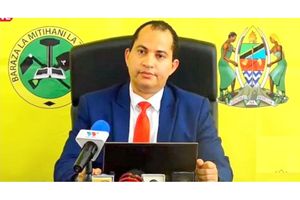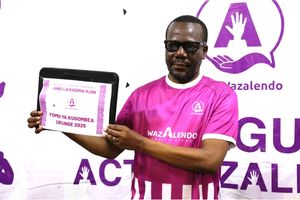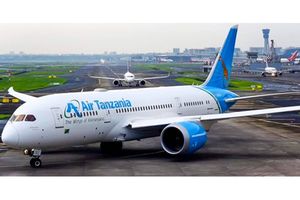Prime
How goat’s milk helped save children’s health in Dodoma
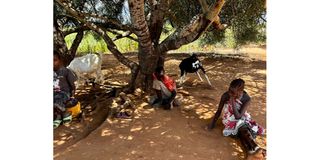
Children benefiting from dairy goats under the 'My Nutrition, My Life' project.
What you need to know:
- Through the Lishe Yangu, Maisha Yangu (My Nutrition, My Life) project, funded by Save the Children Korea, children affected by poor nutrition and stunting have been provided with dairy goats to access the health benefits of goat’s milk.
By Elizabeth Edward
Dodoma. In an effort to address the persistent issue of malnutrition and stunting among children under the age of five in the Dodoma Region, goat’s milk has proven to be a lifeline for low-income families in the Bahi and Chamwino districts.
Children previously suffering from malnutrition have started showing improvements in health thanks to the nutrients found in goat’s milk.
Health experts affirm that goat’s milk, due to its similarity to breast milk in digestibility, is highly suitable for improving the health of at-risk children.
According to a Livestock Officer for Chamwino District Council, Dr Abednego Eloti, goat’s milk is rich in nutrients that are essential for children with poor nutrition. He explains that the milk contains high levels of protein, which are vital for building the body and promoting healthy growth.
“Goat’s milk also contains fat, which is important for providing energy. These and other nutrients contribute significantly to the healthy development of children,” says Dr Eloti.
In addition, the Medicover website highlights that goat’s milk is rich in essential vitamins such as A, B2, C, and D. It is also packed with minerals like calcium, magnesium, and potassium, and is more easily digested than cow’s milk, one of its key benefits.
These properties have led Save the Children in Dodoma to promote the use of goat’s milk as a solution to child stunting in the villages and wards of Bahi and Chamwino districts.
Through the Lishe Yangu, Maisha Yangu (My Nutrition, My Life) project, funded by Save the Children Korea, children affected by poor nutrition and stunting have been provided with dairy goats to access the health benefits of goat’s milk.
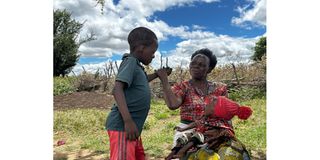
A resident of Chonde village in Bahi district, Jesca Musa, pictured with her children who are beneficiaries of the 'My Nutrition, My Life' project.
The project, which focuses on supporting children from disadvantaged families, goes beyond distributing goats by also offering nutrition education to village health workers and community health officers, ensuring that knowledge reaches the wider community.
Mariam Mwita, Nutritionist and Coordinator of the Lishe Yangu, Maisha Yangu project, explains that a nutritional report revealed a 37 percent stunting rate in Dodoma, prompting the intervention.
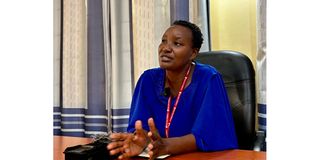
The Coordinator of the 'My Nutrition, My Life' project from Save the Children, Mariam Mwita, speaking about the project recently in Dodoma.
“We identified areas with the most pressing challenges and selected Bahi and Chamwino to reach all villages. We began by training health workers at dispensaries and community health workers who directly engage with the public. This training includes meal planning tailored to the context of many low-income families, teaching them to achieve balanced diets using locally available resources. We also distributed vegetable and fruit seeds, and households with children already affected by malnutrition received dairy goats,” she says, adding:
“Follow-up visits confirmed the nutritional value and digestibility of goat’s milk, which is similar to breast milk. However, we emphasise exclusive breastfeeding for the first six months, after which goat’s milk can be introduced.”
A resident of Mlowa Barabarani village in Chamwino, Ndikirai Tupa, is one of the project’s beneficiaries. She recalls how her child’s health deteriorated to the point of hospitalisation due to poor nutrition.
“Children here eat whatever is available—mainly stiff porridge and okra soup. I didn’t realise this was harming my child. He frequently fell ill, and his weight would drop during clinic visits. It got to the point where he was put on nutritional drips. Nurses urged me to improve his diet, but I had no means,” she recalls.
“Then, this project was introduced, targeting vulnerable families. Through community health workers, I was included. I began receiving nutritional education, a dairy goat, and vegetable seeds.”
As she continued to receive training, she gradually began to provide a balanced diet, and the arrival of the goat's milk seemed to offer a solution.
“The education helped me a lot. I ensured my child ate all food groups. When the goat started producing milk, it felt like a breakthrough for my child’s condition. I prepared porridge with goat’s milk every day, and sometimes he drank it warm. Gradually, his health improved. His weight increased to the point where nurses advised me to ease off on the nutrition as excess weight could become risky,” says Ndikirai.
A resident of Dabalo Ward in Chamwino, Hamida Omari, shares how goat’s milk saved the health of her two-year-old nephew, who was diagnosed with severe malnutrition.
Hamida, who took on the responsibility of raising her nephew after his mother passed away when he was just one month old, explains that the child was deprived of proper nutrition.
“A month after Hamza was born, his mother died. I had to raise him, but I lacked the means. He ate whatever I had—and since I run a local food business, he ate from what I sold. This continued until I took him to the clinic, where I was told he was malnourished and needed urgent intervention,” says Hamida.
Hamza’s condition was confirmed by a Community Health Worker for Dabalo Ward, Erica Kahuluse, who said that they noticed the child’s health was deteriorating and began monitoring him closely.
Erica explains that during clinic visits, it became clear that the child’s weight was dropping rather than increasing, a serious sign of malnutrition. They then began home follow-ups.
“We work closely with dispensary-based health providers. When I received information about this child—whose mother had passed away and who was not being breastfed—it was clear that he lacked adequate nutrition, which worsened his condition. We started him on therapeutic feeding, and fortunately, our nutrition project had just reached our ward. We enrolled the caregiver in the programme, where she received nutrition education and a dairy goat,” says Erica, adding:
“There’s been significant improvement in the child’s health. The malnutrition is gone. He now drinks goat’s milk daily, which has played a vital role in his recovery.”
Erica notes that many villages in Chamwino District suffer from poor nutritional practices, contributing to high levels of stunting and malnutrition among children.
“It’s not that food is unavailable; people just lack awareness about proper nutrition. Many don’t seek or follow expert advice, which leads to practices like feeding infants solid food before six months. We continue to offer nutrition education, but more awareness is needed, especially in rural areas,” she says.
Acting Executive Director for Bahi District Council, Boniface Wilson, acknowledges the issue of stunting, particularly in remote villages where poverty is prevalent.
Wilson explains that many communities in these areas have limited knowledge of nutrition, resulting in cases of stunting.
“Most people here rely on agriculture and livestock, both of which are dependent on weather conditions. During droughts, the situation worsens, leading to increased cases of stunting and malnutrition. There is undoubtedly a lack of awareness around nutrition. Education is vital to help communities understand its importance and implement proper dietary practices. That’s why we work closely with partners who bring impactful projects like Lishe Yangu, Maisha Yangu,” says Wilson.
The project aims to reach 9,800 individuals, including women of childbearing age, mothers with children under five, their children, healthcare providers, and community health workers across the district.


